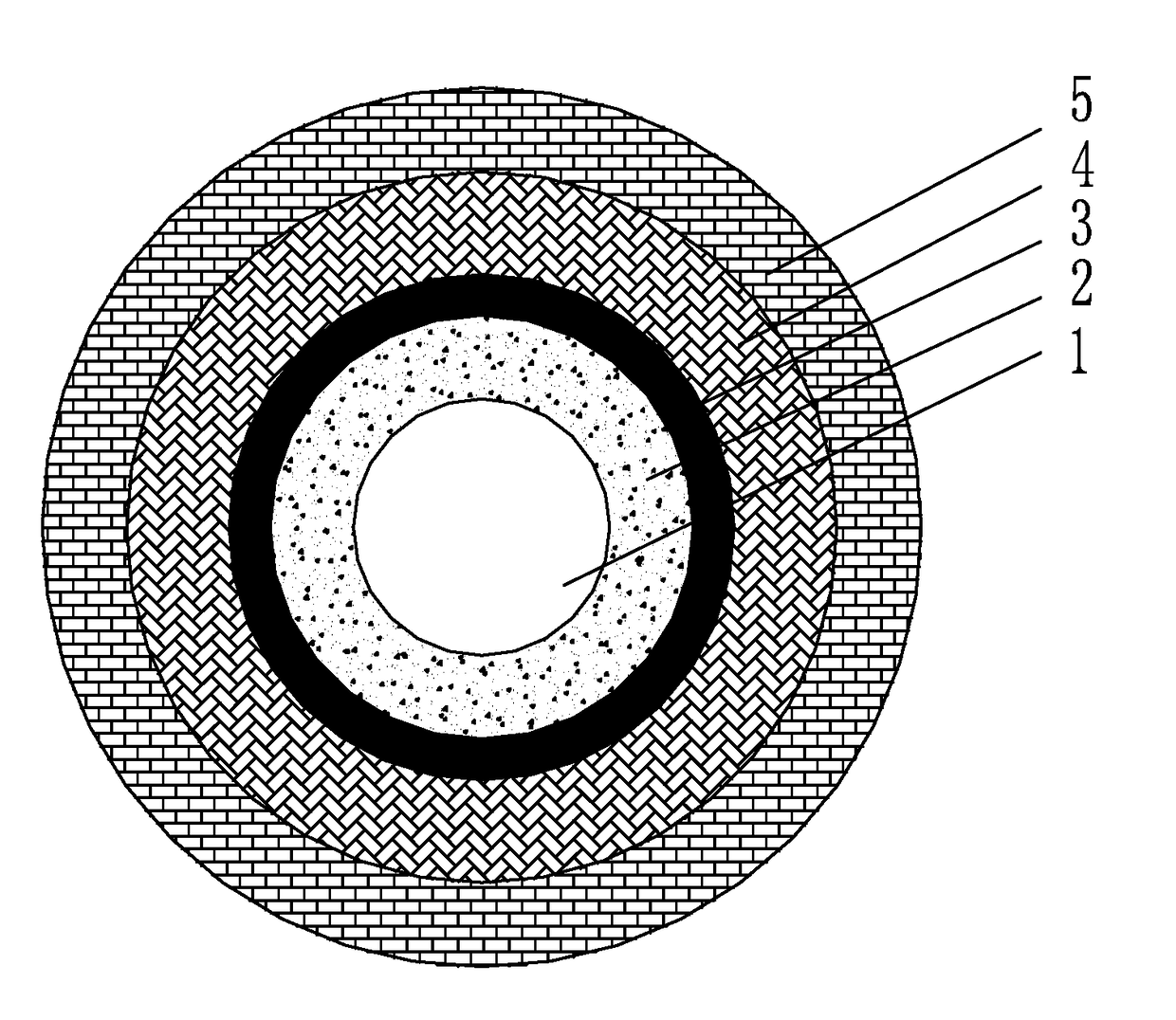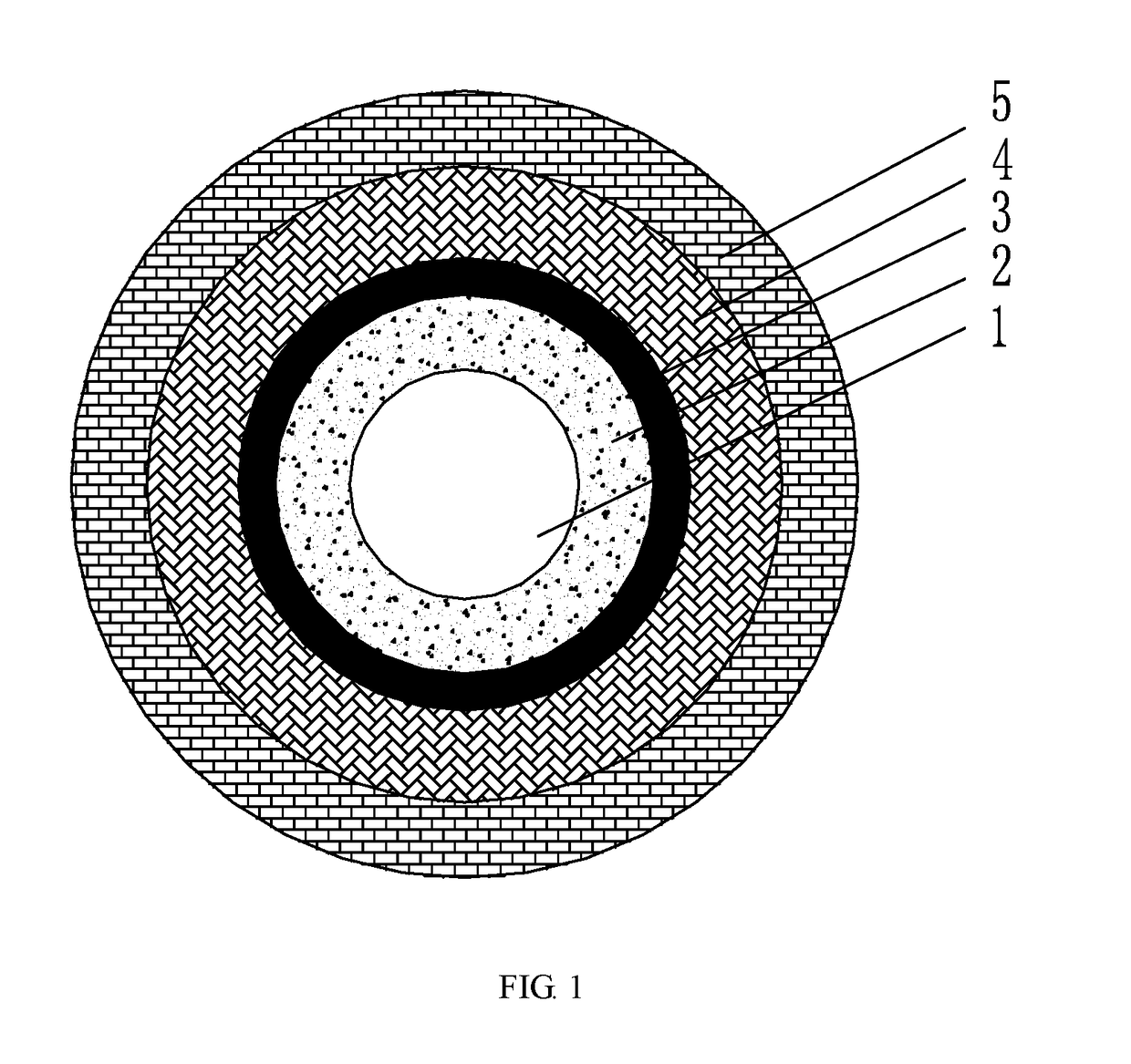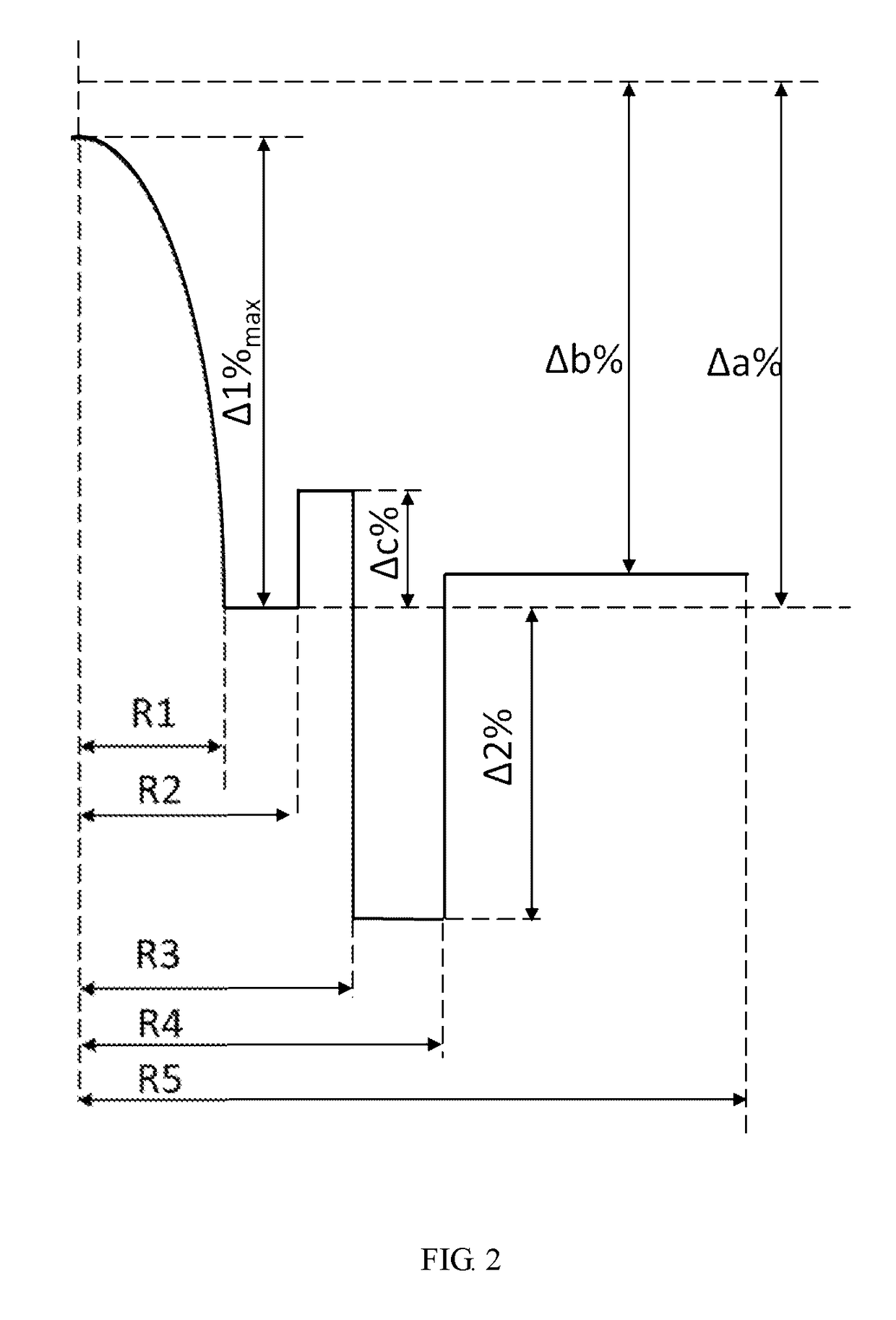Low-loss few-mode fiber
- Summary
- Abstract
- Description
- Claims
- Application Information
AI Technical Summary
Benefits of technology
Problems solved by technology
Method used
Image
Examples
Embodiment Construction
[0021]In order to facilitate the understanding of the present invention, the terms used herein are first generally defined as follows:
core layer: a portion located in the center in the view of fiber cross section, acting as the primary light-guiding region of the fiber;
fluorine-doped quartz cladding: an annular region adjacent to the core layer in the view of fiber cross section;
inner cladding: a cladding region adjacent to the fiber core layer; relative refractive index difference:
Δ%=[ni2-n022×ni2]×100%≈ni-n0n0×100%
ni and n0 refer respectively to the refractive indexes of a corresponding portion and its adjacent outside cladding at 1550 nm wavelength;
power exponent law refractive index distribution profile: a refractive index distribution pattern satisfying the following power exponent function, in which n1 refers to the refractive index of the fiber axis; r refers to a distance from the fiber axis; a refers to a radius of the fiber core; α refers to a power exponent of distributio...
PUM
 Login to view more
Login to view more Abstract
Description
Claims
Application Information
 Login to view more
Login to view more - R&D Engineer
- R&D Manager
- IP Professional
- Industry Leading Data Capabilities
- Powerful AI technology
- Patent DNA Extraction
Browse by: Latest US Patents, China's latest patents, Technical Efficacy Thesaurus, Application Domain, Technology Topic.
© 2024 PatSnap. All rights reserved.Legal|Privacy policy|Modern Slavery Act Transparency Statement|Sitemap



